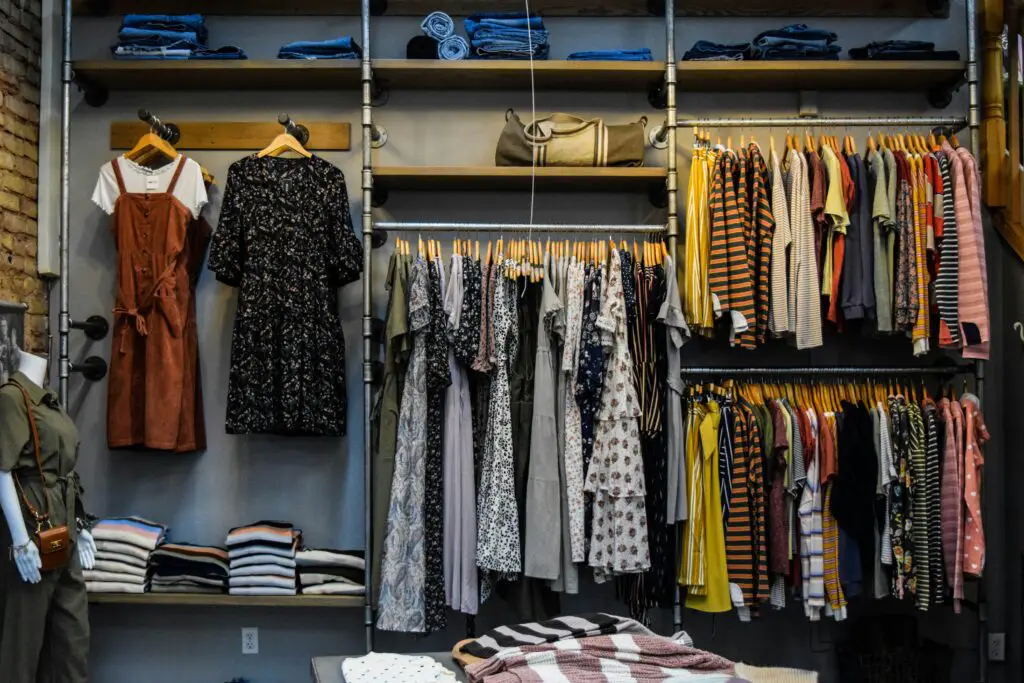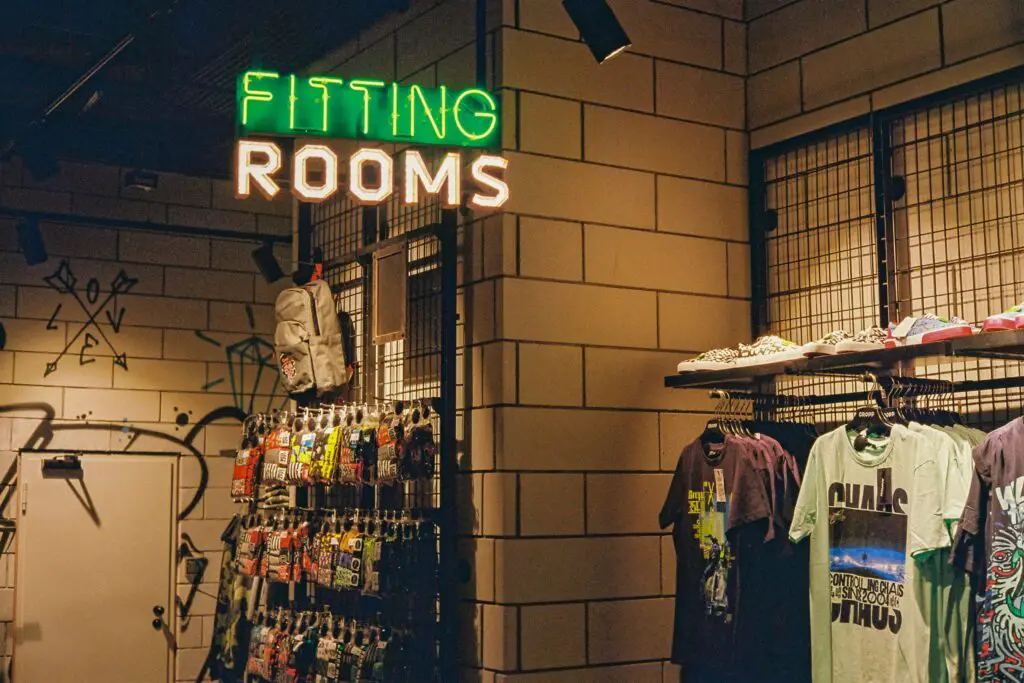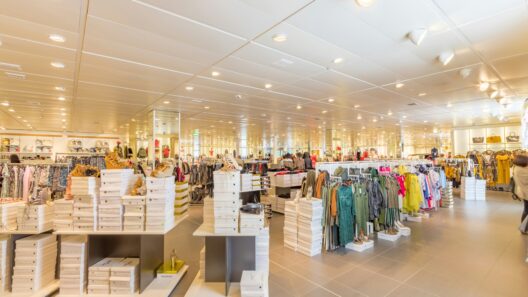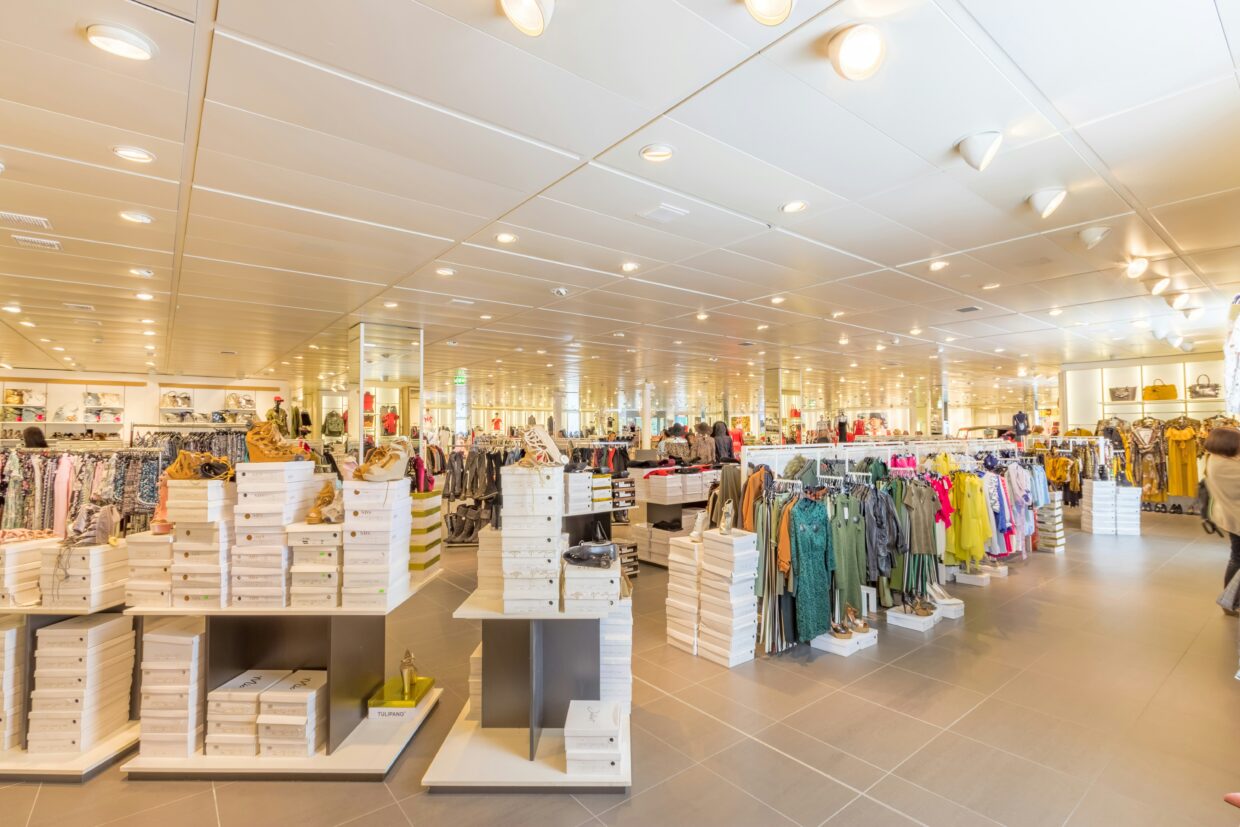Oh, running a clothing store! It sounds glamorous, doesn’t it? The latest fashion, happy customers, maybe even a little retail therapy for yourself. But let’s be real, beneath the chic displays and trendy mannequins, there’s a whole lot of hustle and, well, risk. That’s where clothing store insurance swoops in, like a superhero cape for your business.
Dressing Your Business for Success: The Ultimate Guide to Clothing Store Insurance
Hey there, fellow entrepreneur! Are you a passionate fashionista who’s poured your heart and soul into opening a clothing boutique, a vibrant vintage shop, or perhaps a bustling online apparel store? First off, kudos to you! Building a business from the ground up is no small feat. You’ve probably spent countless hours curating your inventory, perfecting your aesthetic, and dreaming up incredible marketing campaigns.
But let’s pause for a moment and chat about something that might not be as exciting as choosing your next window display, but is absolutely crucial: clothing store insurance. I know, I know, insurance can sound about as thrilling as sorting through a pile of mismatched socks. But trust me, understanding and getting the right coverage for your clothing store isn’t just a good idea; it’s essential for protecting your hard work, your dreams, and your financial future.
Think about it: In the blink of an eye, a burst pipe could flood your stock, a curious customer could trip and fall, or a mischievous burglar could make off with your latest collection. Without the right protection, any of these scenarios could turn your fashion empire into a financial nightmare.
This isn’t about scaring you into buying something you don’t need. It’s about empowering you with the knowledge to make smart decisions for your business. By the end of this article, you’ll have a clear understanding of what clothing store insurance entails, why it’s so important, and how to tailor a policy that fits your unique boutique like a perfectly custom-made suit. Ready to get started? Let’s dive in!

Why Your Clothing Store Can’t Afford to Go Uninsured: The Unspoken Risks
You’ve got your “open” sign lit, your shelves are stocked with the trendiest threads, and the fitting rooms are buzzing. Everything feels perfect. But what if it’s not? Running a clothing store, whether it’s a brick-and-mortar gem or an online sensation, comes with a unique set of risks that can blindside even the most prepared entrepreneur. Let’s peel back the layers and look at some of the common pitfalls that clothing store insurance is designed to protect you from.
Unexpected Mishaps: The “Oops!” Moments That Cost You
Life, and business, are full of surprises. Sometimes, those surprises come in the form of a spilled latte on your pristine white display, or worse, a burst water pipe that turns your boutique into an indoor pool. These “oops!” moments, as I like to call them, can be incredibly costly.
- Property Damage: This is probably the first thing that comes to mind when you think of insurance. Imagine a fire, a severe storm, or even vandalism damaging your storefront, your inventory, or your crucial equipment like cash registers and point-of-sale systems. Without robust property insurance, rebuilding and restocking could drain your savings faster than a clearance sale.
- Customer Injuries: Picture this: a customer excitedly rushes to grab that last designer handbag, slips on a wet spot near the entrance, and injures themselves. Or perhaps a child accidentally pulls down a display, causing an injury. Accidents happen, and if someone gets hurt on your premises, you could be facing hefty medical bills and even a lawsuit. General liability insurance is your knight in shining armor here, protecting you from claims of bodily injury or property damage.
Thefts and Burglaries: When Your Inventory Walks Away
It’s a harsh reality, but unfortunately, theft is a constant threat for retail businesses. Whether it’s shoplifters making off with a few items or a full-blown burglary after hours, losing inventory directly impacts your bottom line.
- Shoplifting: While individual incidents might seem small, they can add up quickly. Business personal property insurance can help cover the cost of stolen merchandise, but it’s important to have strong security measures in place as well.
- Burglary: This is a more significant blow. Imagine arriving at your store one morning to find your doors pried open and your most valuable items gone. Not only is it a financial loss, but it’s also a deeply unsettling experience. Proper insurance can help you recover from these significant losses, allowing you to restock and get back on your feet without a major financial setback.
Cyber Threats: The Invisible Enemy of Online Stores
If you’re running an online clothing store, or even a hybrid model, you’re not immune to risks. In fact, you face a whole new set of digital dangers.
- Data Breaches: Your online store collects sensitive customer information – names, addresses, credit card details. If your system is hacked and this data is compromised, you could face massive fines, reputational damage, and even lawsuits from affected customers. Cyber liability insurance is becoming increasingly critical for any business with an online presence.
- Website Downtime: What happens if your website crashes for an extended period? Every minute it’s down, you’re losing potential sales. While not directly covered by traditional insurance, robust IT security and disaster recovery plans are vital for online retailers.
See? It’s not just about the big, dramatic events. It’s about all the little, unforeseen hiccups that can derail your business if you’re not prepared. That’s why having the right clothing store insurance isn’t a luxury; it’s a fundamental part of running a smart and successful business.
Your Insurance Wardrobe: Essential Coverages for Clothing Stores
Just as your clothing store offers a variety of styles, there’s a range of insurance policies, each designed to cover a specific “fashion emergency” for your business. Let’s break down the essential pieces you’ll want in your insurance wardrobe.
General Liability Insurance: Your Business’s Safety Net
Think of general liability insurance as your store’s all-purpose, go-to outfit. It’s absolutely fundamental. This policy protects your business from claims of bodily injury or property damage that occur on your premises or as a result of your business operations.
- Customer Slips and Falls: We talked about this! If a customer trips over a loose rug or slips on a wet floor and gets injured, general liability can cover their medical expenses and legal fees if they decide to sue.
- Property Damage to Others: Imagine your delivery driver accidentally backing into a neighbor’s fence while making a drop-off. General liability can cover the cost of repairs.
- Advertising Injury: This might sound strange, but if you’re accused of libel, slander, or copyright infringement in your advertising, general liability can offer protection. (Yes, even accidentally using a copyrighted image could land you in hot water!)
Business Personal Property (BPP) Insurance: Protecting Your Precious Inventory
Your inventory is the lifeblood of your clothing store. Without those racks of dazzling dresses, rows of stylish shoes, and piles of cozy sweaters, you don’t have a business! Business Personal Property (BPP) insurance (often part of a Business Owner’s Policy) protects your merchandise, fixtures, and equipment from damage or loss due to covered perils like fire, theft, or vandalism.
- Inventory Protection: This is huge! If a fire sweeps through your store, BPP can help replace your lost stock. If thieves break in and clear out your shelves, it can help you re-purchase those items.
- Fixtures and Displays: Your mannequins, display racks, cash register, computers, and even those gorgeous mirrors in your fitting rooms – they all cost money. BPP covers these vital assets.
- Equipment Breakdown: What if your HVAC system dies in the middle of summer, making your store unbearable for customers? Or your point-of-sale system suddenly goes kaput? Some BPP policies include equipment breakdown coverage, which can be a lifesaver.
Workers’ Compensation Insurance: Looking Out for Your Team
If you have employees, then workers’ compensation insurance is not just a good idea, it’s typically required by law in most states (in the US, at least!). This policy covers medical expenses and lost wages for employees who are injured or become ill as a direct result of their job duties.
- On-the-Job Injuries: A sales associate could slip and fall in the stockroom, or lift a heavy box incorrectly and strain their back. Workers’ comp ensures they get the care they need without you having to pay out of pocket.
- Occupational Illnesses: While less common in retail, some occupational illnesses can occur. Workers’ comp provides a safety net.
- Legal Protection: It also protects your business from lawsuits filed by employees over work-related injuries or illnesses.

Commercial Property Insurance: Securing Your Space
If you own the building your clothing store operates in, commercial property insurance is absolutely essential. This covers the physical structure of your building and any permanent fixtures from perils like fire, storms, and vandalism.
- Building Structure: From the roof to the foundation, this policy protects your physical brick-and-mortar location.
- Attached Fixtures: Things like built-in shelving, lighting fixtures, and even your heating and cooling systems are usually covered under commercial property.
- Business Interruption (Optional, but Recommended!): Many commercial property policies offer an add-on called “business interruption” or “business income” coverage. This is a game-changer! If a covered event (like a fire) forces you to close your store for repairs, this coverage can help replace lost income and even cover ongoing expenses like rent and payroll while you’re temporarily shut down. It’s like having a financial cushion to fall back on while you get your business back on its feet.
Additional Policies to Consider: Tailoring Your Coverage
Just like you might add accessories to complete an outfit, there are other insurance policies that might be a perfect fit for your specific clothing store.
- Cyber Liability Insurance: As mentioned earlier, if you process online orders, store customer data, or even just use a website, this is becoming increasingly vital. It helps cover the costs associated with data breaches, cyberattacks, and the legal fallout from them.
- Product Liability Insurance: While not always a primary concern for clothing, if you design and manufacture your own clothing lines, or import products, this can be important. It protects you if a customer claims your product caused them harm (e.g., a fabric causes a severe allergic reaction).
- Commercial Auto Insurance: If you use a vehicle primarily for business purposes (e.g., making deliveries, picking up supplies), a commercial auto policy is necessary to cover accidents, theft, and damage.
Choosing the right mix of clothing store insurance policies isn’t about throwing money at every possible scenario. It’s about understanding your unique risks and building a robust safety net that allows you to focus on what you do best: making people look and feel fabulous!
Crafting Your Perfect Policy: A Step-by-Step Guide
Alright, you understand why you need clothing store insurance and what types are out there. Now, how do you actually get your hands on the right policy without feeling overwhelmed? It’s easier than you think, especially when you break it down into manageable steps.
Step 1: Assess Your Risks (Be Honest with Yourself!)
Before you even think about calling an insurance agent, take a good, honest look at your business. What are your biggest vulnerabilities?
- Location, Location, Location: Is your store in an area prone to natural disasters like floods, hurricanes, or earthquakes? Is the crime rate high? These factors will influence the types and amounts of coverage you need.
- Inventory Value: How much is your average inventory worth? Do you stock high-value items like designer brands or furs that might require specialized coverage?
- Online Presence: Do you sell primarily online, in a physical store, or both? The more you rely on technology and online transactions, the greater your need for cyber liability.
- Employee Count: Do you have a large team, or are you a one-person show? This directly impacts your workers’ compensation needs.
- Building Ownership: Do you own your building, or do you lease? This determines whether you need commercial property insurance for the structure itself.
Step 2: Get Savvy with the Lingo (No, Really!)
You don’t need to become an insurance guru, but understanding a few key terms will empower you when talking to agents.
- Premium: This is the amount you pay for your insurance policy, usually monthly or annually.
- Deductible: This is the amount you have to pay out-of-pocket before your insurance coverage kicks in. A higher deductible usually means a lower premium, but be sure you can afford that deductible if a claim arises.
- Coverage Limit: This is the maximum amount your insurance company will pay for a covered loss. Make sure your limits are high enough to truly protect your assets.
- Peril: This is what causes the damage or loss (e.g., fire, theft, flood). Your policy will list covered perils.
Step 3: Bundle Up with a Business Owner’s Policy (BOP)
For many small to medium-sized clothing stores, a Business Owner’s Policy (BOP) is like a fantastic all-in-one outfit. A BOP typically combines general liability insurance, commercial property insurance (for your business’s contents), and business interruption insurance into a single, convenient, and often more affordable package.
- Cost-Effective: Bundling these policies usually saves you money compared to buying them individually.
- Streamlined Management: One policy, one premium, one renewal date – it simplifies your life!
- Comprehensive Protection: It provides a solid foundation of essential coverages that most clothing stores need.
Step 4: Seek Professional Advice (Don’t Go It Alone!)
This is where a good insurance agent comes in. Think of them as your personal stylist for insurance.
- Independent Agents are Your Friends: Independent agents work with multiple insurance companies, not just one. This means they can shop around to find you the best coverage at the most competitive price. They’re on your side!
- Ask Lots of Questions: Don’t be shy! Ask about policy exclusions, what happens if you expand your business, and how claims are handled. A good agent will patiently explain everything.
- Provide Detailed Information: Be prepared to share details about your business: your revenue, inventory value, square footage, security measures, and number of employees. The more accurate information you provide, the more tailored and effective your policy will be.
- Get Multiple Quotes: Don’t settle for the first quote you get. Compare policies from a few different insurers to ensure you’re getting the best value.
Step 5: Review and Update Regularly (Your Business is Always Evolving!)
Your clothing store isn’t static, and neither should your insurance policy be.
- Annual Review: Set a reminder to review your policy at least once a year, especially before renewal. Has your inventory value changed? Have you added new services (like online styling or alterations)?
- Major Changes: If you expand to a new location, hire a significant number of new employees, or start offering new product lines, contact your insurance agent immediately. Your policy needs to reflect these changes to ensure you remain adequately covered.
Getting clothing store insurance doesn’t have to be a headache. By taking a proactive approach, understanding your needs, and partnering with a knowledgeable agent, you can dress your business in the perfect protective layers, allowing you to focus on what you love: helping your customers look and feel their best!
Beyond the Policy: Smart Practices to Minimize Risk and Maximize Savings
Having the right clothing store insurance is fantastic, but it’s only one piece of the puzzle. Smart business owners also implement strategies to reduce their risk profile, which can not only prevent claims but also potentially lower their insurance premiums over time. It’s like pairing a great outfit with smart accessories – they work together to enhance the whole look!
Beef Up Your Security Game
Prevention is always better than a cure, especially when it comes to theft and vandalism.
- Robust Alarm Systems: Invest in a high-quality security alarm system with professional monitoring.
- Surveillance Cameras: Install visible security cameras, both inside and outside your store. Make sure they cover key areas like entrances, exits, cash registers, and high-value merchandise displays.
- Secure Locks: Upgrade to commercial-grade locks on all doors and windows. Consider reinforced glass if your area is prone to break-ins.
- Adequate Lighting: Keep your storefront and surrounding areas well-lit, even after hours.
- Inventory Management: Implement strict inventory control procedures to track merchandise. Conduct regular inventory counts to quickly identify discrepancies.
- Cash Handling: Minimize the amount of cash kept on premises. Make regular bank deposits.
Focus on Safety First (for Customers and Employees)
A safe environment benefits everyone and reduces the likelihood of costly liability claims.
- Clear Walkways: Keep aisles and pathways clear of clutter, boxes, and tripping hazards.
- Non-Slip Flooring: Use non-slip mats, especially in areas prone to wetness (like near the entrance on a rainy day).
- Regular Maintenance: Promptly address any repairs needed, such as loose floorboards, leaky pipes, or faulty wiring.
- Emergency Exits: Ensure all emergency exits are clearly marked, easily accessible, and free from obstructions.
- Employee Training: Train your staff on safety procedures, including how to handle spills, identify potential hazards, and what to do in an emergency.
- First Aid: Have a well-stocked first aid kit readily available and ensure at least one staff member is trained in basic first aid.
Data Protection: A Digital Shield
For online stores or those with an e-commerce component, digital security is paramount.
- Strong Passwords: Enforce strong, unique passwords for all systems and accounts. Consider two-factor authentication.
- Software Updates: Regularly update all your software, operating systems, and e-commerce platforms. These updates often include critical security patches.
- Firewalls and Antivirus: Install and maintain robust firewalls and antivirus software.
- Secure Payment Processing: Use reputable, PCI-compliant payment gateways to handle customer credit card information.
- Data Backup: Regularly back up all your critical business data, both customer information and operational files. Store backups securely, preferably off-site or in the cloud.
By proactively addressing these areas, you’re not just being a responsible business owner; you’re actively reducing your exposure to risks. This diligence can make your business more attractive to insurers, potentially leading to more favorable rates and fewer unexpected headaches down the line. Remember, every little bit of prevention is like adding an extra layer of fabulousness to your business’s financial stability!

The Perfect Fit: Choosing the Right Policy for Your Store
So, you’ve assessed your risks, learned the lingo, and understood the different types of coverage. Now, how do you actually make sure the policy you choose is the “perfect fit” for your unique clothing store? It’s not about finding the most expensive policy, or even the cheapest, but the one that truly meets your specific needs.
Consider Your Business Model
- Brick-and-Mortar Boutique: If your store is primarily a physical location, your focus will heavily be on commercial property, general liability, and workers’ comp. Foot traffic, physical inventory, and the building itself are your main concerns.
- Online-Only Store: For e-commerce ventures, cyber liability becomes critical. You might still need business personal property if you store inventory in a warehouse or home office, but your liability risks shift from slip-and-falls to data breaches.
- Hybrid Model: If you have both a physical store and a significant online presence, you’ll need a blend of all these coverages, ensuring both your physical and digital assets are protected.
Don’t Skimp on Coverage (But Don’t Over-Insure Either!)
Finding that sweet spot can be tricky.
- Under-Insuring: This is a common pitfall. If your coverage limits are too low, you could be left with massive out-of-pocket expenses after a significant loss. Imagine a fire destroys $200,000 worth of inventory, but your policy only covers $100,000. That’s a big problem.
- Over-Insuring: While rare, it’s possible to pay for more coverage than you realistically need. An experienced insurance agent can help you strike the right balance, ensuring you’re adequately protected without wasting money on unnecessary coverage.
Read the Fine Print (Yes, All of It!)
I know, it’s tempting to skim past the legal jargon, but resist the urge!
- Exclusions: Pay close attention to what your policy doesn’t cover. For example, standard commercial property policies often exclude flood or earthquake damage, requiring separate policies.
- Limits and Sub-Limits: Understand the maximum payouts for different types of claims. Some policies might have sub-limits for specific items, like high-value jewelry or furs, even if your overall property limit is high.
- Claim Process: Familiarize yourself with the steps involved in filing a claim. Knowing what to do beforehand can save you a lot of stress if disaster strikes.
Ultimately, choosing the right clothing store insurance is an investment in peace of mind. It allows you to run your business with confidence, knowing that you’re prepared for the unexpected twists and turns of the retail world. So go ahead, focus on your fabulous fashion, and let your insurance policy handle the unexpected wardrobe malfunctions!
Take the Plunge! Your Business Deserves Protection
So there you have it, fashion entrepreneur! We’ve journeyed through the ins and outs of clothing store insurance, from understanding the hidden risks to crafting a policy that fits your business like a glove. You’ve learned about essential coverages like general liability, business personal property, and workers’ compensation, and even explored vital additions like cyber liability.
Remember, running a clothing store is about passion, creativity, and connection with your customers. But it’s also about smart business decisions. Think of insurance not as an expense, but as an essential investment in your future. It’s the sturdy foundation that allows your fashion dreams to flourish, even when life throws a curveball.
Don’t wait for a “what if” scenario to become a “now what” crisis. Take control today! Reach out to a trusted independent insurance agent, discuss your unique needs, and get those quotes. It’s a proactive step that will save you countless headaches and potential financial ruin down the road.
Now, go forth and conquer the world of fashion, knowing your business is beautifully and securely dressed for success! The runway is yours, and with the right insurance, you’re ready for anything.
Frequently Asked Questions About Clothing Store Insurance
Got a few lingering questions? You’re not alone! Here are some of the most common queries about clothing store insurance:
Q1: Is clothing store insurance legally required?
A: While general liability and property insurance aren’t always legally mandated (though often required by landlords or lenders), workers’ compensation insurance is typically a legal requirement if you have employees, varying by state or country. However, even if not legally required, having comprehensive insurance is a smart business decision to protect your assets and future.
Q2: How much does clothing store insurance cost?
A: The cost of clothing store insurance varies widely depending on several factors, including your store’s location, size, annual revenue, the value of your inventory, the types of coverage you choose, your claims history, and your chosen deductibles. A small online boutique will pay significantly less than a large, multi-location brick-and-mortar chain. Getting multiple quotes from different providers is the best way to get an accurate estimate for your specific business.
Q3: What’s the difference between business personal property and commercial property insurance?
A: Commercial property insurance primarily covers the physical structure of the building you own (if you own it) and permanent fixtures. Business personal property (BPP) insurance, on the other hand, covers the movable contents inside your building, such as your inventory (clothes, accessories), furniture, fixtures (like display racks), equipment (cash registers, computers), and supplies. If you lease your space, BPP is usually what you’ll need to cover your stuff.
Q4: Does my general liability insurance cover me if a product I sell causes harm?
A: Generally, standard general liability insurance might offer limited coverage for product liability. However, if you design, manufacture, or import your own clothing line, or if you sell products that could pose a higher risk (e.g., jewelry with small parts, certain chemical-treated fabrics), you might need a separate product liability insurance policy for more robust protection against claims that your product caused bodily injury or property damage.
Q5: Can I get insurance for my home-based online clothing store?
A: Absolutely! If you operate your clothing store from your home, your homeowner’s insurance policy likely won’t provide adequate coverage for business-related risks. You’ll need a Business Owner’s Policy (BOP) or a combination of general liability, business personal property, and potentially cyber liability insurance to properly protect your home-based business, including your inventory, equipment, and any liability related to your online sales.








